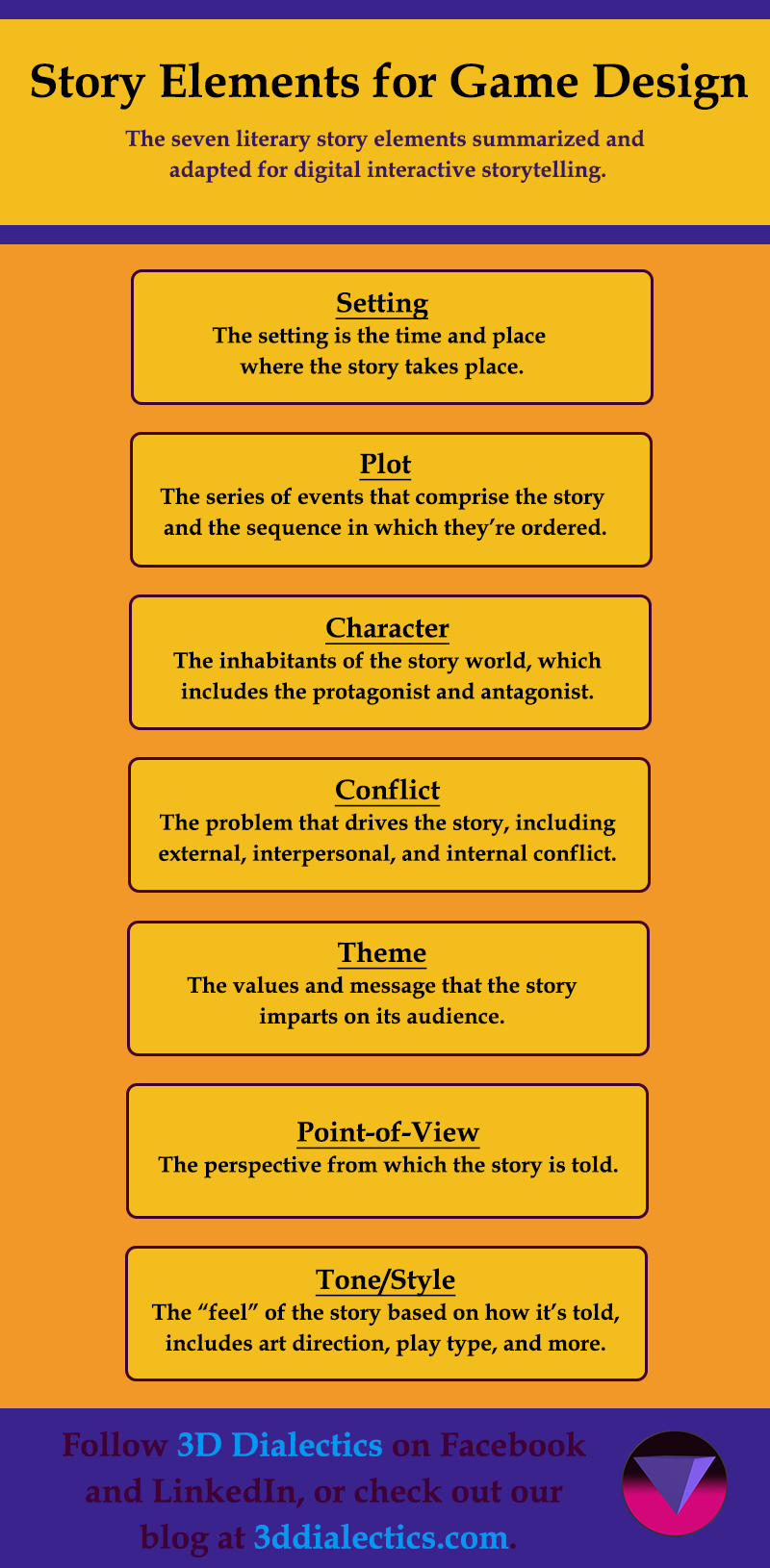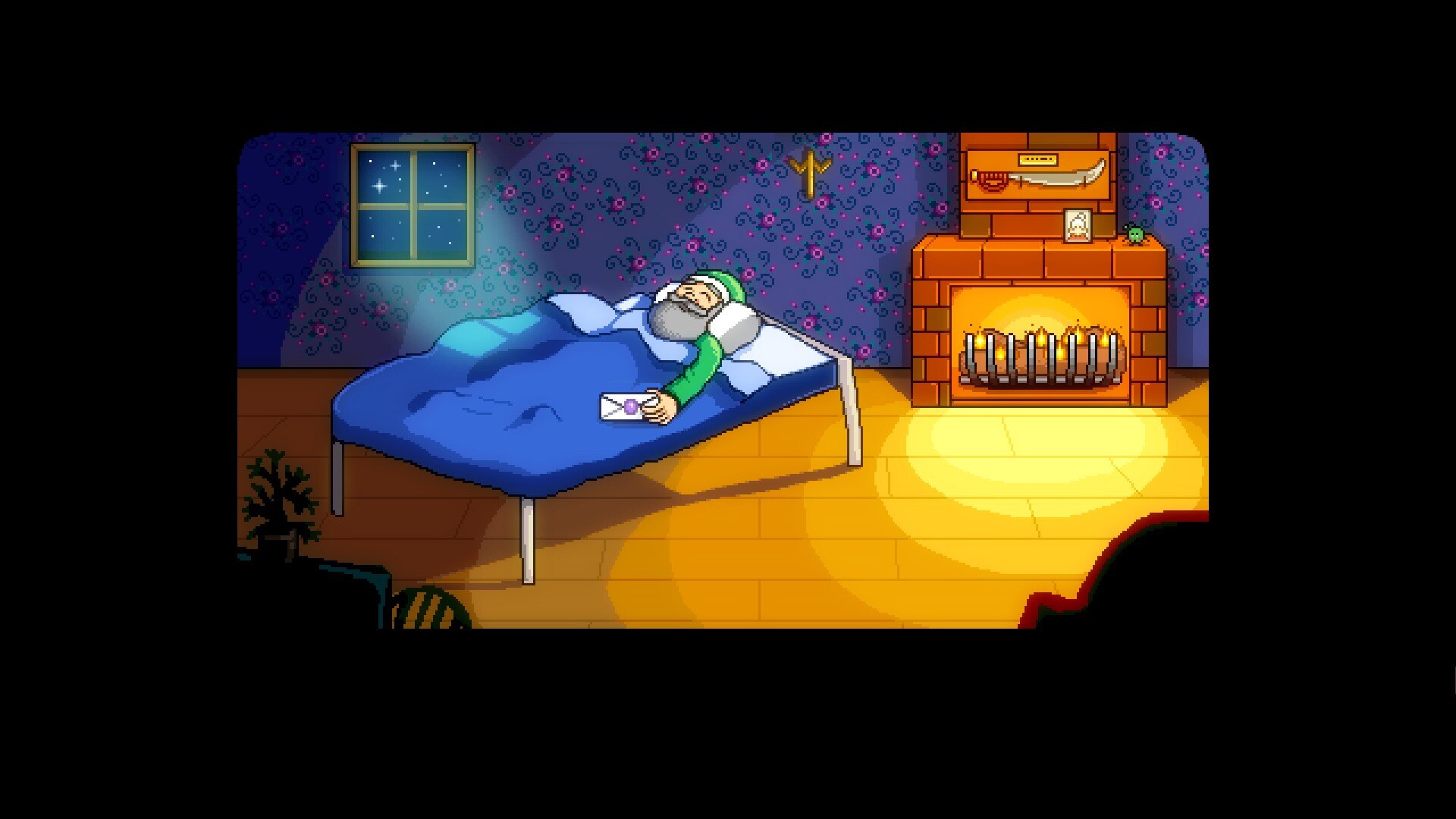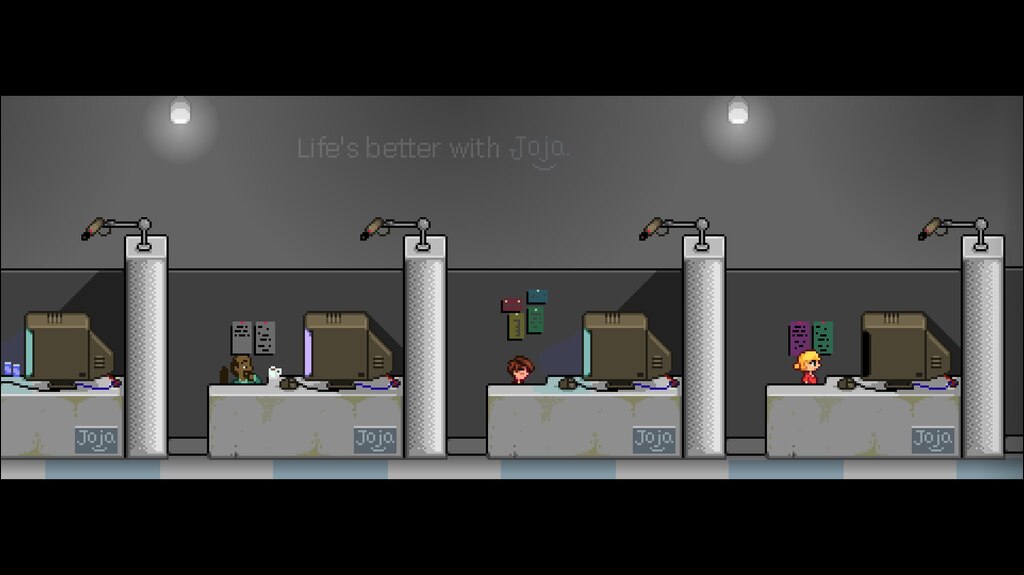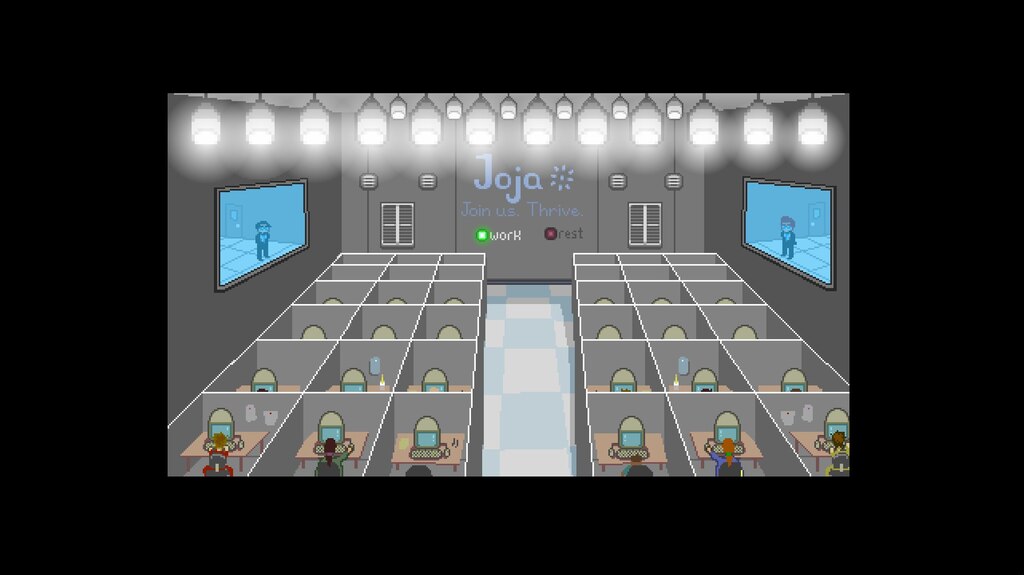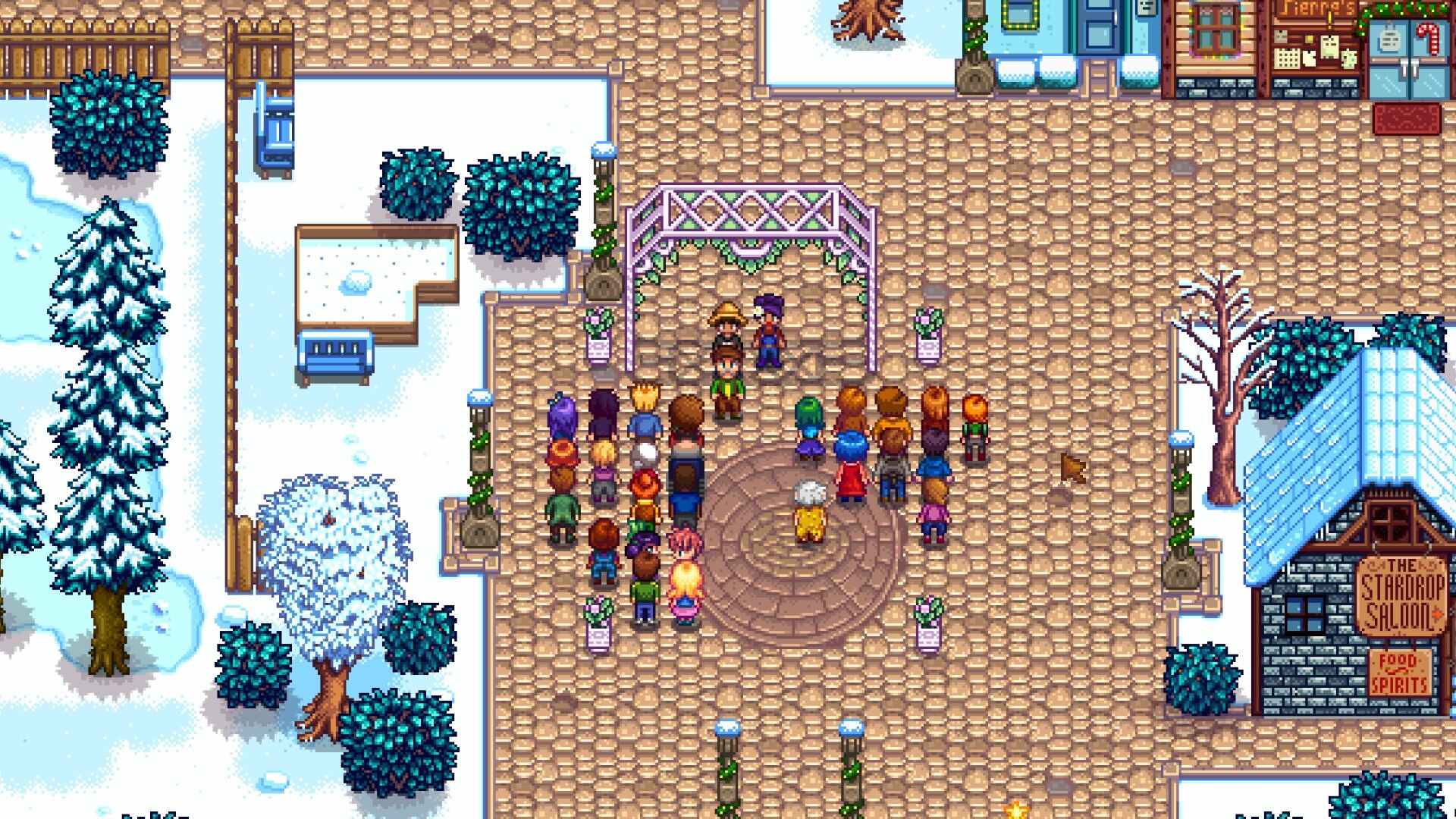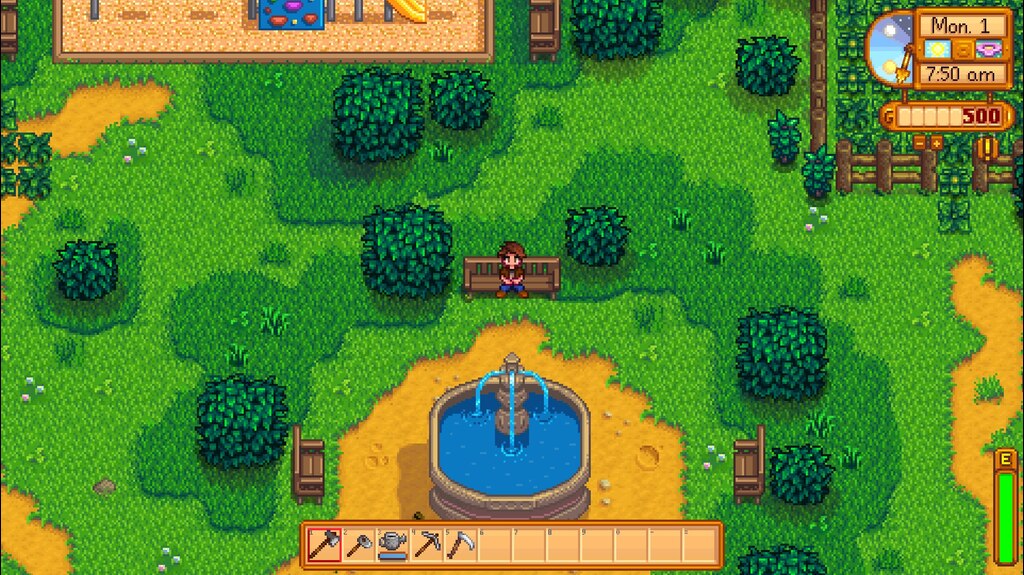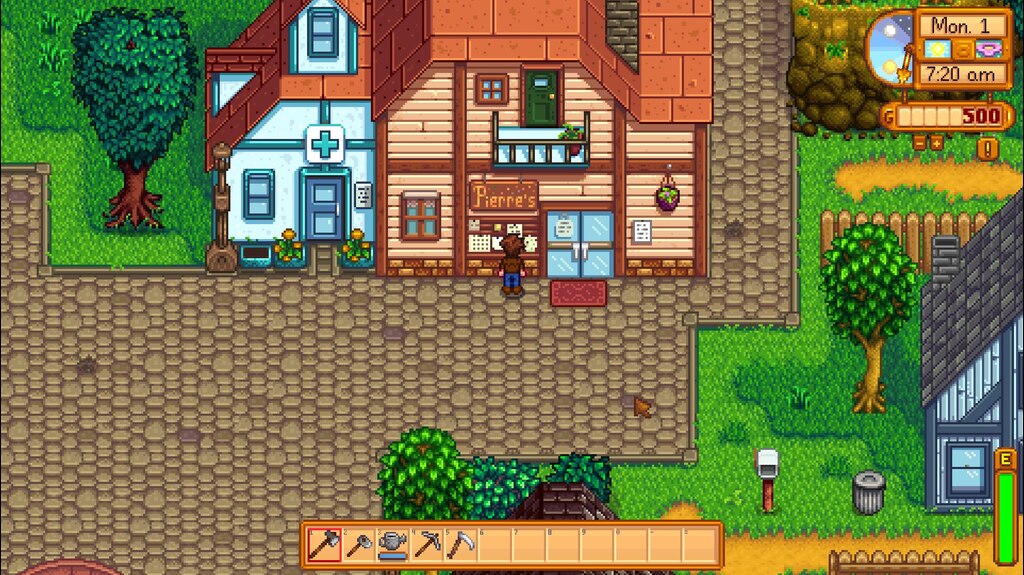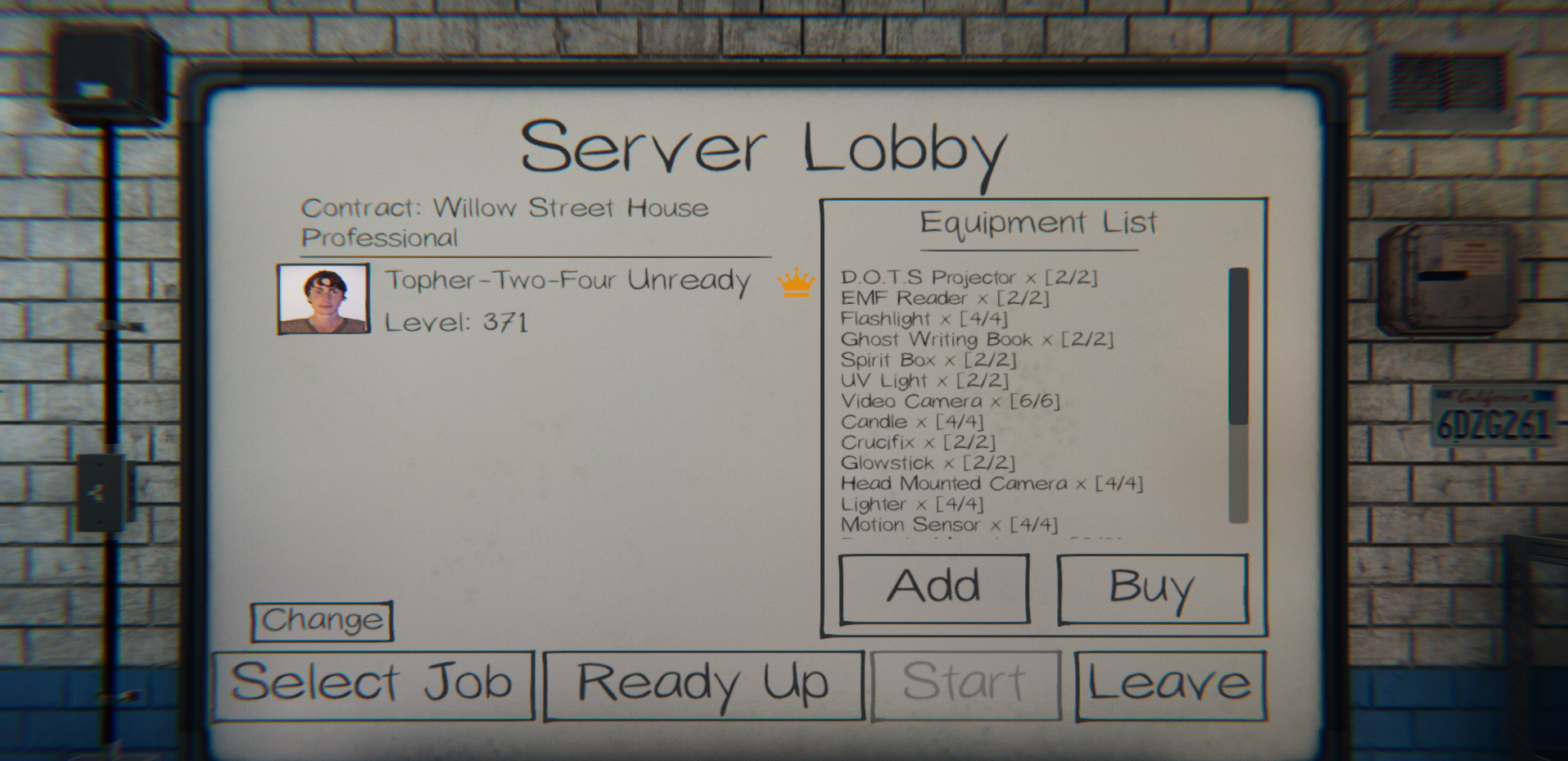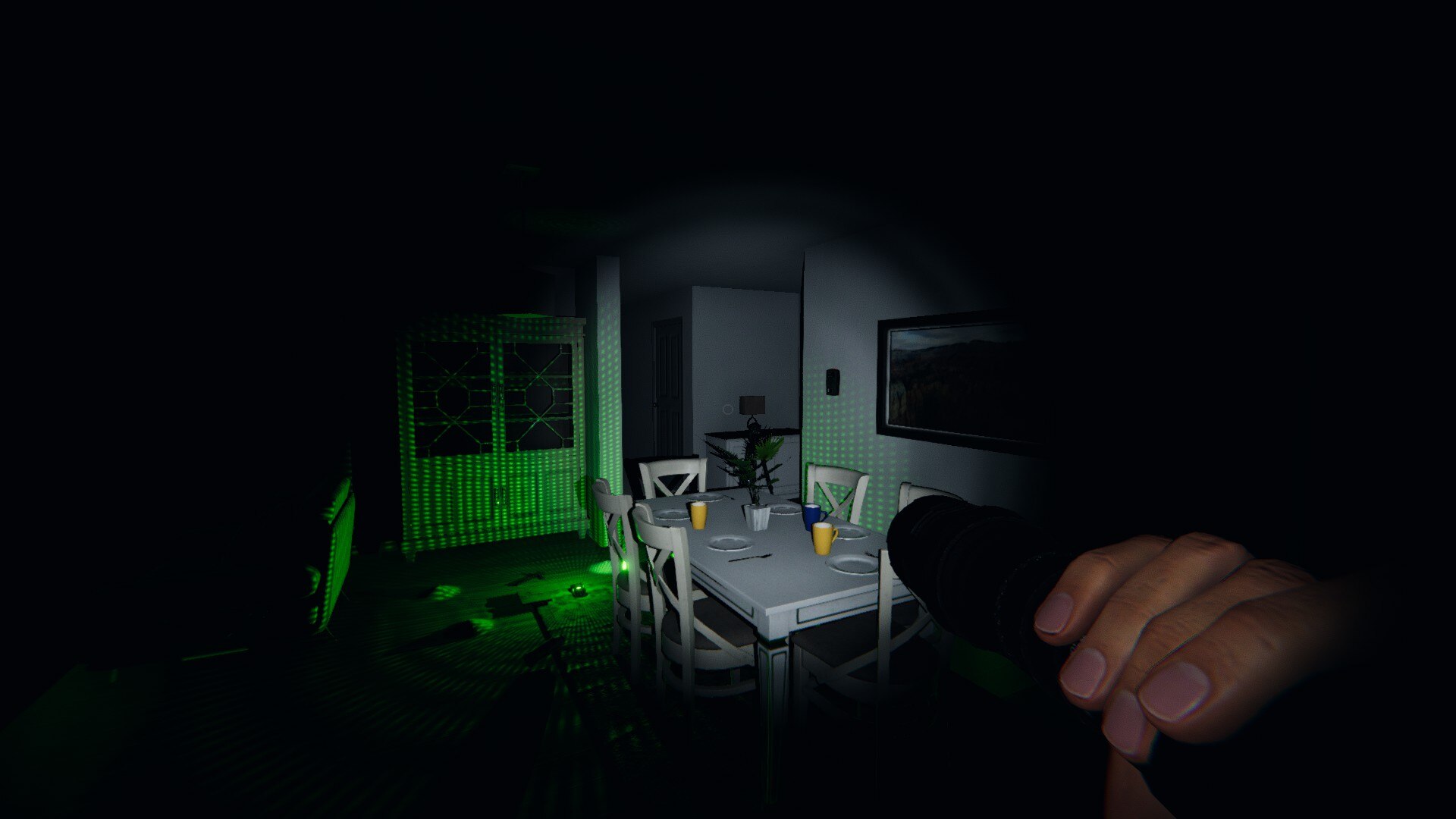Seven Elements of Story for Game Design

Introduction:
Many who’ve studied story are familiar with the question: which is more important, the plot or character? The short answer is both. The individual elements of the story all contribute something unique and essential to it. We’re going to look at the elements of story, and we’re going to perform a handful of game story analyses to demonstrate these concepts in action.
The Elements of Story:
The writer of the article that I use as reference has done a spectacular job of explaining the seven literary elements in her article titled: Story Elements: 7 Main Elements of a Story and 5 Elements of Plot. I strongly encourage you to check out her work and bookmark it for continual reference, just as I have.
A great lesson for creators of interactive digital media is that we don’t always need to reinvent the wheel, feel comfortable building on the work of others, just make sure to give credit where it’s due.
I will briefly summarize the 7 Elements of Story below to give some background to our analysis:
Setting: The place in time and space where the story takes place.
Plot: Plot is the series of events that takes place in the story, and in which order they’re arranged.
Character: Characters are the inhabitants of the story world. The protagonist is the “hero” of the story who is called to adventure out of a want for something. The antagonist is the character in the story who has a want that is in direct conflict with what the protagonist wants, causing conflict.
Conflict: The disturbance in the protagonist’s world that makes them want more and drives them to action. Conflict drives action, and action drives story. There are three levels of conflict: external (from the story in the external world), interpersonal (conflict between people), and internal (conflict stemming from their individual character flaws).
Theme: The theme of a story is the message that it gives by how the story moves from beginning to end. Examples would be revenge, coming of age, true love. Theme should not be confused with plot types of the similar name (revenge, coming of age, etc.…), because although they’re related, they’re not the same thing. I will cover the different plot types in a future article.
Point of View: The point of view from which the story is told. Narrative story uses either the first person (self) or third person (narrator) to tell a story. Second person point of view IS used to tell story in games, an example being the dungeon master in Dungeons & Dragons, whereby the actions of the player are described or dictated to them.
Tone/Style: Tone or style refer to the “feel” the story has, which for interactive digital media could be influenced by art direction, gameplay style, and other variables.
Case Analysis #1 - Stardew Valley
Plot: Your grandfather passed away and left you his farm, which you choose to move to, leaving the old life at a desk behind.
Character: The protagonist is the player character that moves into their grandfather’s farm in Stardew Valley. The antagonist of the story can be thought of as the Joja Mart owner, who seeks to destroy the culture of Stardew Valley by demolishing the community center.
Conflict: The external conflict in the story is driven by the overarching goal to restore the farm and town. The preservation of Stardew Valley’s community center is another conflict that has disturbed and threatened the status quo, thus driving the character into action to save it…or to destroy it, in the case of characters with questionable moral judgement. The interpersonal conflict stems from needing to build relationships with the somewhat distrustful townspeople. The character is driven to action to develop these relationships using gifts and by completing tasks. The inner conflict for the protagonist would be the need for new such as foraging, combat, and others.
Theme: The values in Stardew Valley change from the initial, which is longing for something more in life than mindless office work, to the end value, which is finding fulfillment in a simpler life. It is essentially a “coming of age” story and love story (more on that later!).
Point-of-View: The story is told and experienced in the first-person point of view, because the player assumes the role of protagonist. The gameplay point-of-view, however, is in a top-down, third person perspective, and this refers only to the camera placement in the game.
Style/Tone: The tone is established through the minimalist graphics, colorful art direction, and upbeat musical scores. The game is relaxing at times, at others tedious and tough, which matches the story of life on a farm.
Case Analysis #2 - Phasmophobia
Plot: There has been strange, paranormal activity at certain houses and location, and as a ghost hunter of fortune, you must investigate them.
Character: The protagonist(s) is/are the ghost hunter, whom the players experience the game as. The character choices are interchangeable and serve little more than as an avatar. The force of antagonism is the haunting of the location, and the antagonist is the ghost, who changes from game to game. The story of the ghosts has a bit more development, and are based upon real-life ghost stories and myths, which are also represented in their in-game behavior.
Conflict: The external conflict is that the player’s character, the protagonist, seeks to identify they type of spirit haunting the location. This want of the protagonist is in opposition to the ghost, who wants nothing more than to take its undead angst out on any human that dares approach.
Theme: The theme of the game could be considered as good against evil, the living versus the damned.
Point-of-View: The game is both told and experienced in the first-person perspective, because the player’s character both interacts with the world as the protagonist, as well as views the story from their perspective.
Style/Tone: The tone of the game establishes a sense of horror through darkness, spooky ambient sounds, and unpredictability, to name a few.
Final Note:
I hope that this analysis of the elements of story in digital games has been helpful as inspiration to you. I chose to include games that did not have a robust story arc as well, to demonstrate how these tools can still be used in game analysis. If your game is story-driven, then these seven elements should be considered as you design your game’s story, to ensure it has a logical framework. In addition, these seven elements can all be considered variables when designing interactive media, because the creator has the option of leaving story design largely up to the player, which is common in open-world, sandbox games, such as Minecraft.
I intend for these literary tools to serve as a means of inspiration for game design but is by far not the only, or even the best way, to design a game story. My goal is to immerse you in topics that are not always considered in game design, so that you, as a creator of interactive digital experience, can have a few more tools from diverse disciplines in your toolbox..
All screenshots are intellectual property of their respective companies, and I do not claim to own any of the screenshots in any way, shape, or form. If you’re listening (companies), thank you for making a memorable game that I had the pleasure of analyzing!
Thank you as always for taking the time to read this article, I hope it will be of use to you. Please let me know if you have any feedback, I’m always looking for ways to improve my own skills and perspective.
